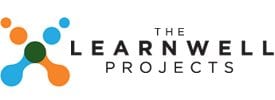Did you know that students bring more than 16,000 hours of learning with them to college? (And this does not include out-of-class studying.) According to Malcolm Gladwell’s 10,000 Hour Rule, which asserts that it takes about 10,000 hours of practice before one reaches expert level, students should be expert learners by the time they reach college. However, we know this is not the case!
In Gladwell’s bestselling Outliers, he lists a wide variety of fields and industries in which the 10,000 Hour Rule is affirmed. However, this rule does not seem to apply to students.
So why are students not experiencing the benefits of the 10,000 Hour Rule? Why aren’t students able to learn effectively, given the amount of time they invest in it the process?
In this era in which K-12, colleges, and universities are pledging to ramp up their levels of rigor, I believe it’s important to consider how students experience rigor. If we understand rigor from their perspective, then we can more effectively help them thrive in this increasingly demanding period.
There are a variety of elaborate definitions of rigor in academia. However to students, rigor is very simple: “it” is the gap between the learning outcomes they are accustomed to reaching and those that are required for their college and university courses. The greater the disparity, the more rigorous the course.
I’ve had the privilege of obtaining views from a wide array of students from a variety of institutions over the years. Through workshops, in-depth personal interviews, document analysis, learning assistance sessions, and perhaps most importantly, informal chats, I have learned one key thing: Students are quite adept at reaching learning outcomes; they simply don’t know how to attain the kinds of outcomes their professors’ expect.
Students’ Evolving Views on Rigor
Prior to college, students identify course rigor by the quantity of required tasks. The more rigorous courses require the most papers, have the most tests and quizzes than, and demand the most homework. When high school students discuss class difficulty, they make comments such as, “Mr. Jones assigns a lot of homework”, or “We have to write a lot of papers.” Or as one graduate a prestigious private school told me, “In high school we didn’t learn how to learn; we learned how to never be outworked by anyone else.” Such students believe that handling the workload is the chief goal of learning, and their success is affirmation that they are capable students.
However, these same students are often pacified in their early college years. As they are assigned less homework and have fewer quizzes and exams, they are lulled into believing that their courses aren’t as rigorous as they originally had imagined. This “truth” was captured during the compilation of the National Survey of Student Engagement (NSSE) data, which shows that students’ perceptions of college difficulty are greater prior to entering college than they are after a year of college. These beliefs persist despite the jarring reality that they perform less than expected after the first year of college than they anticipated prior to starting college. What’s going on here?
A change in rigor metrics is under way. Students are encountering a shift in the way rigor is measured. They are still operating according to their pre-college rigor metric system, which was solely based on the quantity of tasks. Therefore they conclude, “I am not doing as many things as I did prior to college and certainly not as much as I imagined. College is not as hard as I assumed.” Consequently, they don’t work as hard. They don’t realize that while the quantity of tasks drops considerably, the quality of learning that they’re expected to achieve while doing those tasks significantly increases. This explains why promising students do badly early in college. Their signals are all crossed. Their former metrics no longer apply, and they aren’t even aware that rigor is measured differently in their new environment.
Upperclassmen often attempt to “help” new students understand how course difficulty is measured in college. Recognizing that course rigor is largely a function of the professor teaching the course rather than the course itself, the upperclassmen tell underclassmen students which professors they should take for their courses. Unfortunately, many of these seasoned students will say things such as Dr. Jones’s course is hard; don’t take her”, or “Take Dr. Foster; he is so easy.” Delightfully, the more serious-minded upperclassmen will encourage students: “Take Dr. Fletcher. Her course is hard, but you will learn a lot.” This is invaluable information to new students because, whether these upperclassmen know it or not, they are conveying a new rigor metrics system.
When viewed according to the pre-college metrics paradigm, most college courses appear to have comparable levels of rigor because they have similar quantities of tasks (e.g. numbers of tests, papers, etc). However, the wise upperclassmen are unknowingly introducing students to the true rigor measurement in college: the quality of required learning outcomes for the course.
So these students underclassmen learn have learned two useful lessons:
1) Their former rigor metric system is no longer applicable (realized through trial and error)
2) There is a qualitative difference between courses (articulated by upperclassmen)
Now that these students are using the proper metrics, they need a model that enables them to navigate this new system. The ThinkWell-LearnWell Diagram™ (TWLW Diagram) was created for this purpose. It is a metacognitive tool that helps students adjust their thinking skills and learning outcomes to match those required to excel in their courses. Students report that using the diagram deepens their learning and boosts their test scores. (See comments section in Why Good Students Do Bad in College.) In other words, they are able to adjust their learning according to the rigor of their courses.
So how can institutions expedite students’ adjustment to more rigorous environments?
1) Institutions must make the process explicit. We must make students aware, in plain language, of the qualitative change that is required to excel in college, along with the implications of the change. We cannot continue our current practice of hoping students learn how to navigate this change through osmosis.
2) We must describe the implications of the change. Simply including Blooms Taxonomy of Higher Order Thinking Skills in a syllabus or making students aware of the different thinking levels is insufficient. They need to know how to manage their learning from the creation of appropriate goals to assessing learning outcomes. The ThinkWell-LearnWell ™ Diagram is useful in achieving this goal. It helps students set goals and convert their study activity into usable learning outcomes. (Click here to obtain a free pdf. version of the TWLW Diagram.)
I’ve shared some observations I’ve gathered from students. Please post your thoughts on whether you are seeing this experience at your institution. Feel free to share this post with your students and encourage them to comment as well.
Click here for Part II: Adjusting to Rigor: Changing Students’ Default Settings



It would be nice if more of what we teach transferred to college. I will work on stating goals more clearly and try to convey outcomes in a better way as I continue to teach.
I wish that the work done in high school could reflect the work in college. I know less papers, quizzes, and tests means more work. By reading this blog, I hope to take my work more seriously, as I look forward to putting this to use in my life.
Wow, I wish they had told us these things back in high school……thanks!